Compact Portable SATCOM Solution Delivered By EKINOPS + IEC Telecom
EKINOPS (Euronext Paris: EKI) (ISIN: FR0011466069 and IEC Telecom Group have launched OneGate Compact, a lightweight and portable plug-and-play solution that provides critical communications functions for both terrestrial and maritime applications.

OneGate Compact, purpose built for performance in tight spaces, seamlessly reroutes available bandwidth to essential processes to ensure vital communications remain online, whatever the circumstances. The hybrid satellite and GSM solution also supports the continuity of governmental and business operations in rural areas, enabling applications such as connected cars for first responders, telemedical support for doctors in remote areas, and mobile offices for public services such as e-banking and e-learning.
Powered by the Ekinops Open Virtualization Platform (OVP), OneGate Compact delivers vital digitalization and network optimization capabilities to regions with unstable infrastructure, such as field mission teams, and small and medium-sized maritime vessels. Operating from
a digital environment, the solution is equipped with bandwidth optimization and advanced filtration tools to offer a VSAT-like experience over a Mobile Satellite Services (MSS) terminal. Together, the technologies enable full connectivity in the most inaccessible areas while reducing the need for onsite staff and hardware updates.
Operating on Ekinops’ OVP also enables the creation of value-added hybrid WAN services as needed, including video conferencing, remote maintenance, telemedicine and reliable file transfers. The solution has been particularly well received by the offshore sector. Offshore Support Vessel (OSV) operators report that virtualization of telecommunication services offered by OneGate Compact helped them to improve performance of their fleets and significantly increased visibility over maritime operations at the drilling site.
Ekinops’ OneAccess OVP platform has enabled OneGate Compact to be designed as an agile solution that can be updated and upgraded in the future without the need to replace the hardware. OneGate Compact is compatible with the requirements of all major satellite operators.
“Offering affordable and reliable digitalization for niche and underserved sectors sits at the heart of what we do,” said Nabil Ben Soussia, VP Maritime, IEC Telecom Group. “Following the success of the original OneGate network management system, we partnered with Ekinops again
to deliver this compact and portable version designed to make digitalization accessible to an even wider range of customers working in remote areas. Whether a vessel is trapped in the middle of a storm or a mobile rescue team is on a mission in an area without comms infrastructure, OneGate Compact will maintain connections and protect vital operations.”
Frank Dedobbeleer, Group VP Sales EMEA & APAC at Ekinops, said, “We are delighted to have grown our long- standing partnership with IEC Telecom to deliver another pioneering solution. The OneGate Compact is a real extension of its portfolio, allowing IEC Telecom to empower some of the world’s most remote regions with reliable global coverage, and address a wider range of smaller vessels in which every centimeter of space comes at a premium. Our virtualization technology sits at the core of the solution, enabling seamless connectivity on-the-go and making digital available to a new range of end-users.”
OneWeb Adds 36 Satellites To The Firm’s Constellation Via Arianespace Soyuz
Performed on Monday, April 26, at precisely 07:14 a.m. local time at Russia’s Vostochny Cosmodrome (22:14 a.m. on April 25, UTC), Soyuz Flight ST31 orbited 36 new OneWeb satellites. That brings the size of the OneWeb fleet on-orbit to 182 in number.
Flight ST31 was the 56th Soyuz mission carried out by Arianespace and its Starsem affiliate.
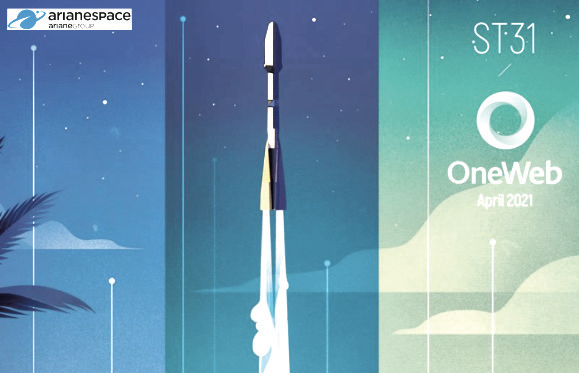
Arianespace has launched 182 OneWeb satellites through six Soyuz launches to date. Pursuant to an amended launch contract with OneWeb, Arianespace will perform 13 more Soyuz launches through 2021 and 2022.
These launches will enable OneWeb to complete the deployment of its full global constellation of low Earth orbit satellites by the end of 2022. OneWeb’s mission is to bring internet everywhere to everyone, by creating a global connectivity platform through a next-generation satellite constellation in LEO.
The OneWeb constellation will deliver high-speed, low-latency connectivity to a wide range of customer sectors, including aviation, maritime, backhaul services, and for governments, emergency response services and more. Central to its purpose, OneWeb seeks to bring connectivity to every place where fiber cannot reach, and thereby bridge the digital divide.
The satellite prime contractor is OneWeb Satellites, a joint venture of OneWeb and Airbus Defence and Space. The satellites were produced in Florida, USA, in the company’s leading-edge satellite manufacturing facilities that can build up to two satellites per day on a series production line dedicated to spacecraft assembly, integration, and testing.
“Congratulations to all the teams who made this latest mission from the Vostochny Cosmodrome a success. This launch again confirms Arianespace’s ability to deploy the OneWeb constellation through the use of three different Soyuz launch sites – in French Guiana, Kazakhstan and Russia,” said Stéphane Israël, Chief Executive Officer of Arianespace. “I want to sincerely thank OneWeb for its trust. I am delighted that our company has contributed – for the sixth time – to this client’s ultimate ambition of providing Internet access to everyone, anywhere, at any time.”
QuinetiQ To Lead Hypersat’s Hyperspectral Satellite Design Development
Hypersat has awarded a design-phase contract to QinetiQ Inc. (QinetiQ) for their next generation hyperspectral satellite — this study will be an enabling activity for a potential constellation of six LEO satellites that Hypersat plans to launch and that will be capable of producing greater information about the material properties on Earth than any current capability in orbit.

QinetiQ will lead a team of specialist engineering and technology organizations across the US that includes Redwire, Millennium Engineering and Integration, LLC and Brandywine Photonics.
The team selected Virgin Orbit as the launch provider in part because of the unparalleled agility, mobility, and responsiveness afforded by air-launch, which allows for shorter call-up times and more flexible scheduling for customers, as well as direct injection into precise target orbits. In addition to the value for commercial customers, this capability enables a major strategic advantage to government organisations seeking to maintain unencumbered overhead intelligence.
Each satellite will achieve its incredible resolution by offering hyperspectral imaging – the ability to capture and process an image at wavelengths across the whole reflective spectrum from visible light to longwave infrared, pixel by pixel. This enables the identification of items in an image with superb precision, whether a camouflaged vehicle; diseased crops within a harvest; or gases leaking from a pipeline. That level of information allows users to make informed decisions only dreamed of in the past.
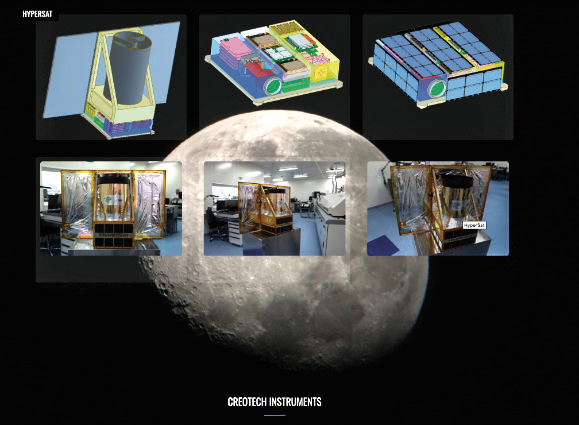
The first satellite, to be launched in early 2023, will have 500 spectral bands across the visible to shortwave infrared region and a ground sample distance of 6m – almost twice that available from existing LEO satellites. The following five satellites will offer longwave infrared images and even more capability in the shortwave infrared region.
The high spatial and high spectrum pixel resolution available from its sensor payload will allow the satellites to be used not only in defense and security applications, but also for other commercial sectors, such as agriculture and insurance, where highly accurate EO images can inform critical decisions.

Derek Woods, Founder, President and CEO of Hypersat LLC, said, “The partnership with QinetiQ and Virgin Orbit ensures our satellites are on a path to orbit with the most capable team possible. We look forward to redefining earth observation with an unparalleled hyperspectral and long wave capability.”
Mary Williams, President, QinetiQ Inc. said, “We are excited to partner with Hypersat and Virgin Orbit on this ground breaking program. QinetiQ’s expertise in hyperspectral systems development and data analytics is helping to provide cutting edge technology for both public and commercial organizations; bringing space-based technology to defense and security customers while also supporting the remote sensing needs of civil, environmental and commercial industries.”
“Virgin Orbit is making good on our promise to unleash the small satellite revolution,” said Virgin Orbit CEO Dan Hart. “QinetiQ’s team embodies the bold energy of this new era of space. It’s extremely exciting to join with our partners to deploy new capabilities and new ideas that will shape our world.”
Axelspace To Deliver EO Data For Blue Agave + Avocado Plantations In LATAM
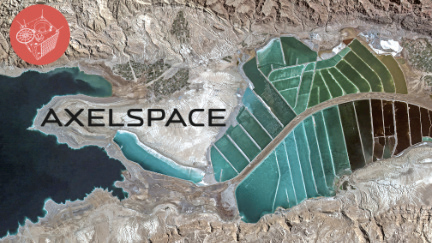
Axelspace Corporation has partnered with Gtt NetCorp, Inc. to provide EO data from AxelGlobe to Mexico, Central America, Venezuela and the Caribbean territory.
Under this partnership, Axelspace and Gtt NetCorp plan to enhance agriculture and land management monitoring using AxelGlobe data in these regions for agricultural purposes for the Blue Agave (main raw material to make tequila) and avocado plantations (“the green gold of Mexico”).
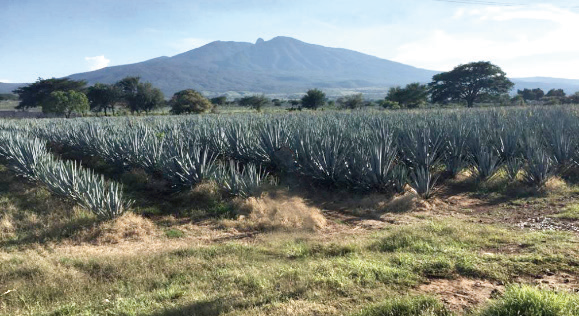
Blue agave plantation in Mexico.
With more than 25 years’ experience leading geospatial innovation in Mexico and LATAM, Gtt NetCorp is constantly in pursuit of delivering solutions that have high, aggregate value to its customers.
Gtt NetCorp focuses on proprietary processes and methods applied to designing, developing, and implementing productivity transforming solutions that integrate geospatial, Big Data, robotics, AI/ML, and IT/IoT technologies.
Sierra Nevada Corp. Creates Sierra Space Commercial Company

Sierra Nevada Corporation (SNC) has created Sierra Space, a new, commercial, space company. The new company’s “space-as-a-service” business model will leverage cutting-edge technologies, such as Dream Chaser® spaceplanes and expandable LIFE™ habitats, within the fast-growing new space economy, which is projected to grow to $1.4 trillion by 2030.
With assets transitioned from the SNC’s Space Systems business area, Sierra Space will deliver the future of space transportation, destinations and infrastructure, including plans to offer the first free-flying commercial space station.
The new commercial space station integrates the large size and versatility of LIFE habitats with the high cargo capacity, and non-toxic runway returns to Earth, of the Dream Chaser spaceplane. Under NASA contract, Dream Chaser will perform the first of at least seven cargo missions to the International Space Station starting next year.
Sierra Space will take advantage of synergies made possible by SNC’s broad customer base and industry-leading space technology. Sierra Space will have the independence to seek creative partnerships and market opportunities to scale its growth quickly and capitalize on a fast-growing and competitive marketplace. The company begins its journey with $3 billion+ in active contracts and anticipates revenues exceeding $4 billion within the decade.
The Integration Readiness Review is Successfully Passed By Kleos For Their Polar Vigilance Smallsats
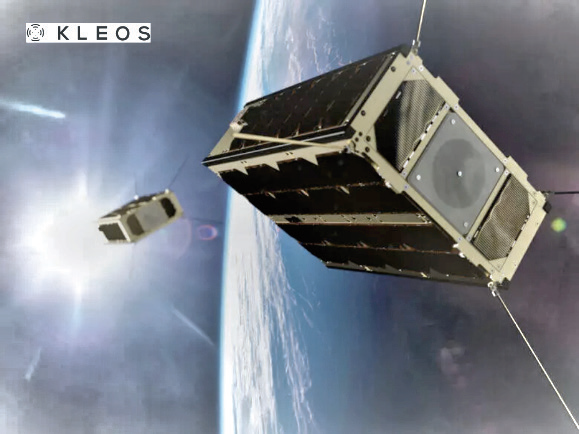
Kleos Space S.A. (ASX:KSS, Frankfurt:KS1, Kleos or Company) has confirmed that the development of the company’s second satellite cluster, the Polar Vigilance Mission (KSF1), is on track for a mid-2021 SpaceX launch, this news coming after the firm successfully completed their Integration Readiness Review and the satellites start the build process with satellite builder ISISPACE.
The four Polar Vigilance smallsats are in the assembly and testing phase in preparation for final acceptance. Kleos’ satellites will then be delivered to the launch site for integration into the SpaceX Falcon 9 launch vehicle.
The KSF1 Polar Vigilance Mission satellites are scheduled for a mid-2021 launch under a rideshare contract with Spaceflight Inc. The KSF1 satellites will launch into a 500 to 600 km SSO, increasing Kleos’ coverage to the north and south of the 37° inclination of the Scouting Mission satellites, which successfully launched in early November of 2020. Kleos’ third satellite cluster, the Polar Patrol Mission, is scheduled to launch in December 2021 aboard a SpaceX Falcon 9.
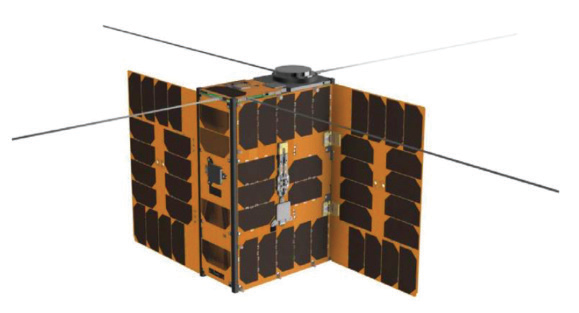
The KSF1 Satellite, model, image courtesy
of ISISPACE.
Kleos’ satellites detect and geolocate radio frequency transmissions to provide global activity-based intelligence, improving the detection of ‘dark’ activities such as drug and people smuggling, border challenges, and illegal fishing.
Kleos Space CTO Miles Ashcroft said, “Development of the KSF1 cluster is progressing at an incredible pace with delivery to site planned for the end of May. Kleos is leveraging the experience and enthusiasm of its satellite builder, Netherlands-based ISISPACE, to develop and deliver the satellites quickly as well as improve hardware and software capability. We are growing our constellation rapidly in 2021 with a further cluster scheduled for launch towards the end of the year. Every satellite cluster launched increases the ground covered and the time covered, thus, the value of our radio frequency geolocation data increases, enabling tiered subscription licenses for governments and commercial entities to be offered.”


